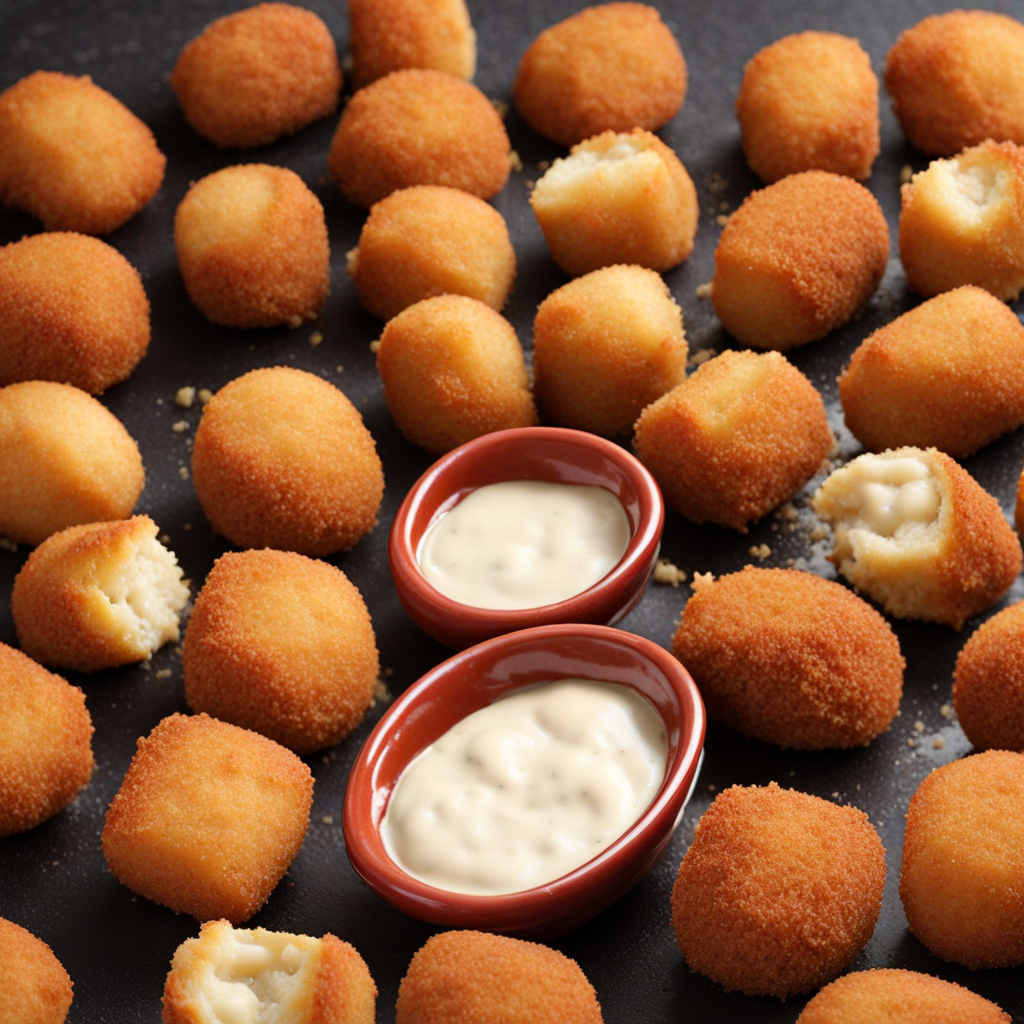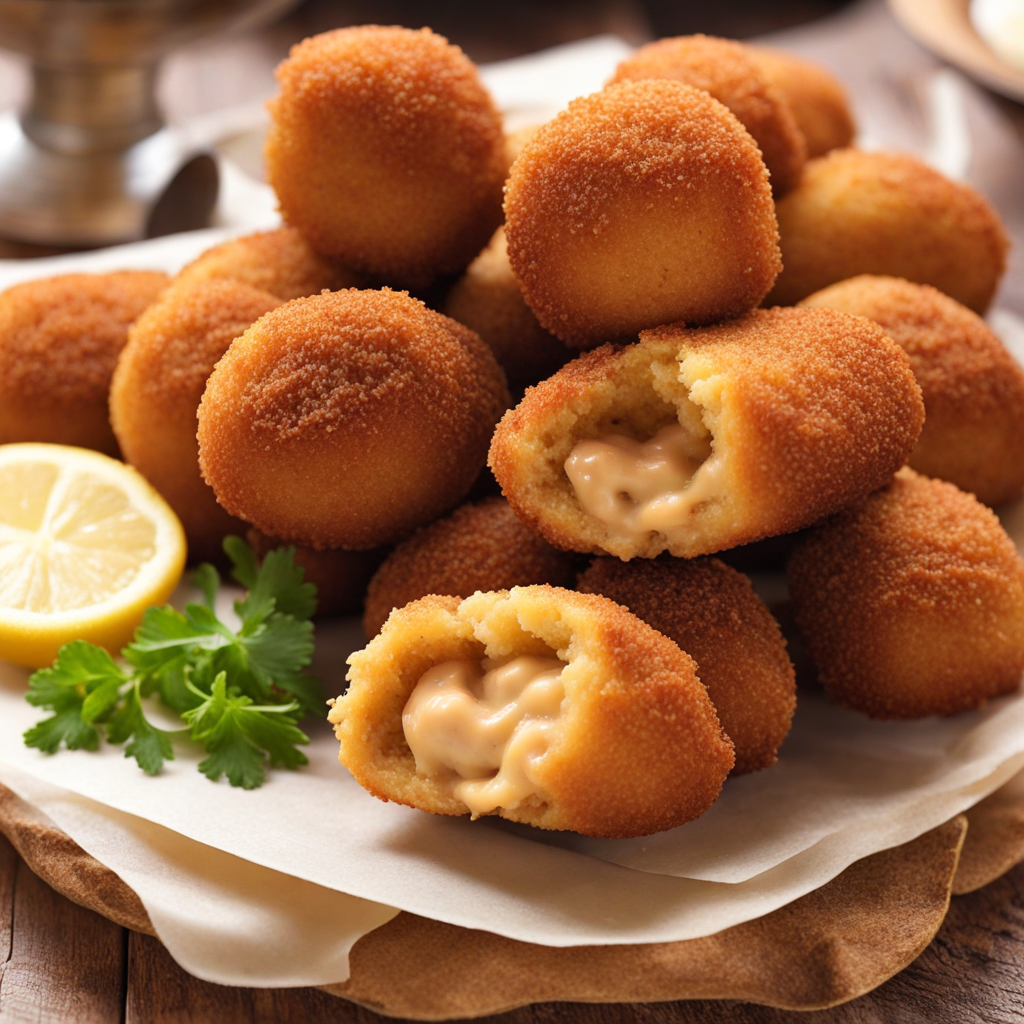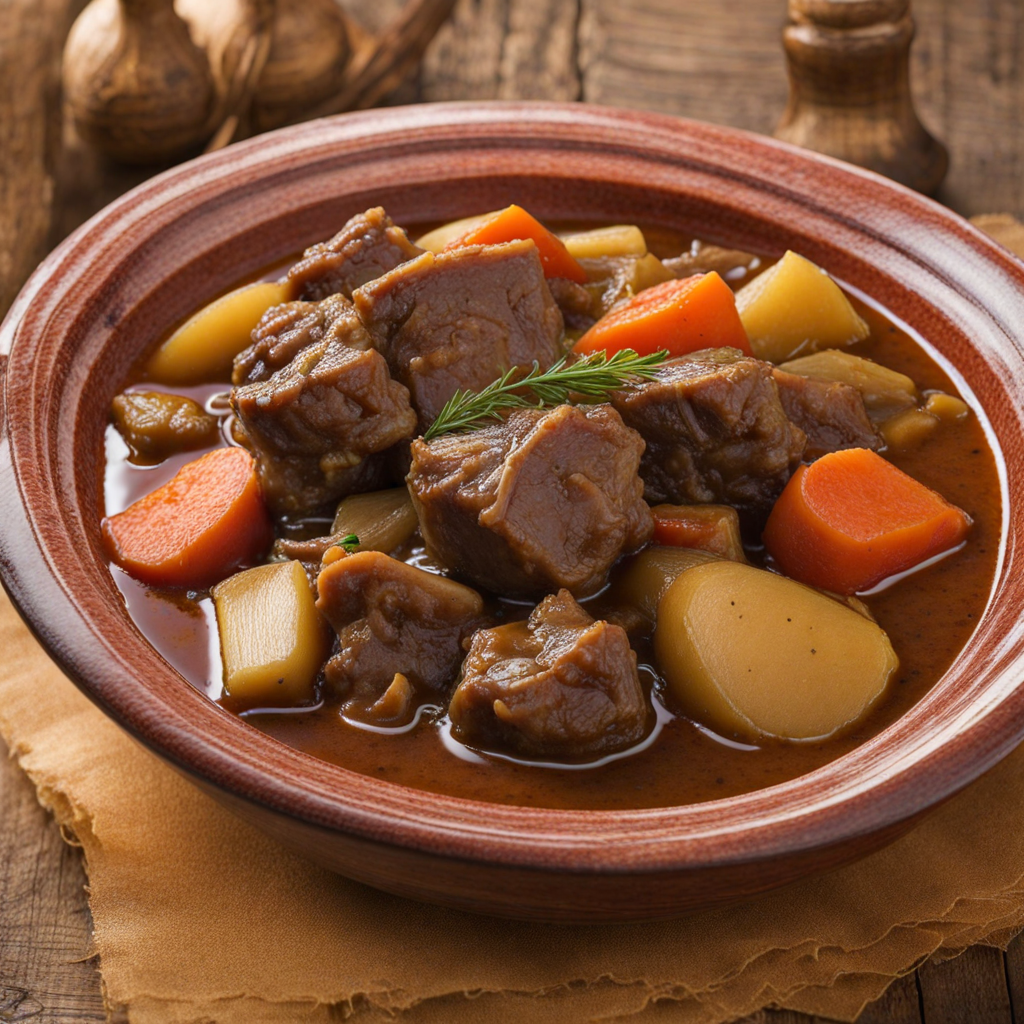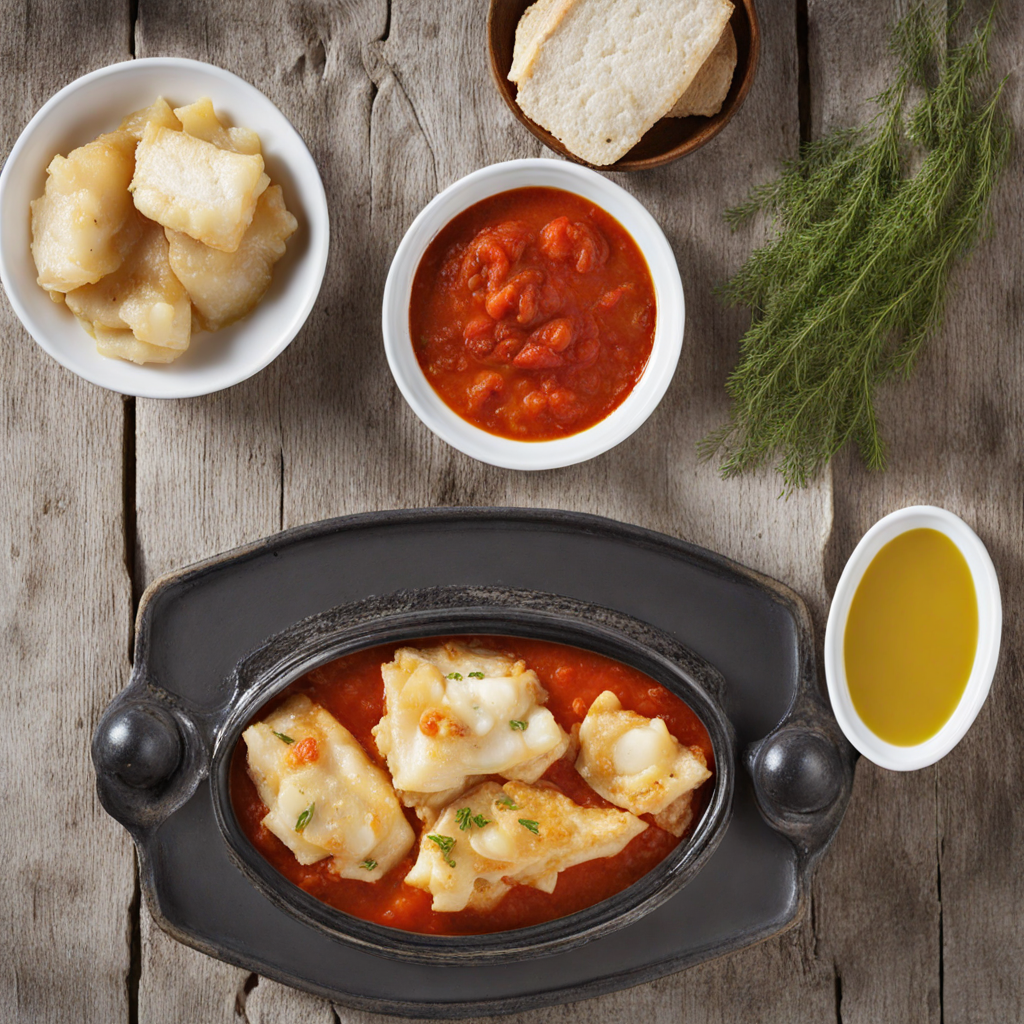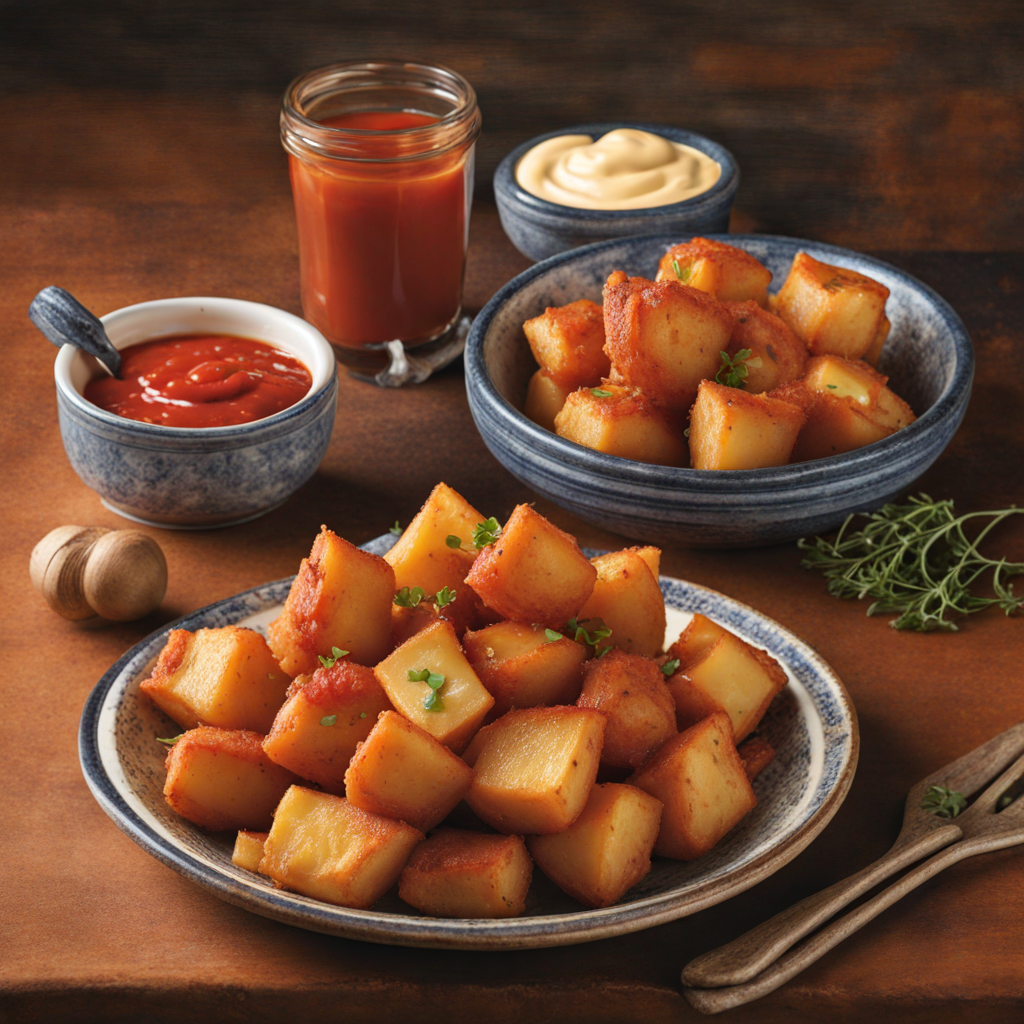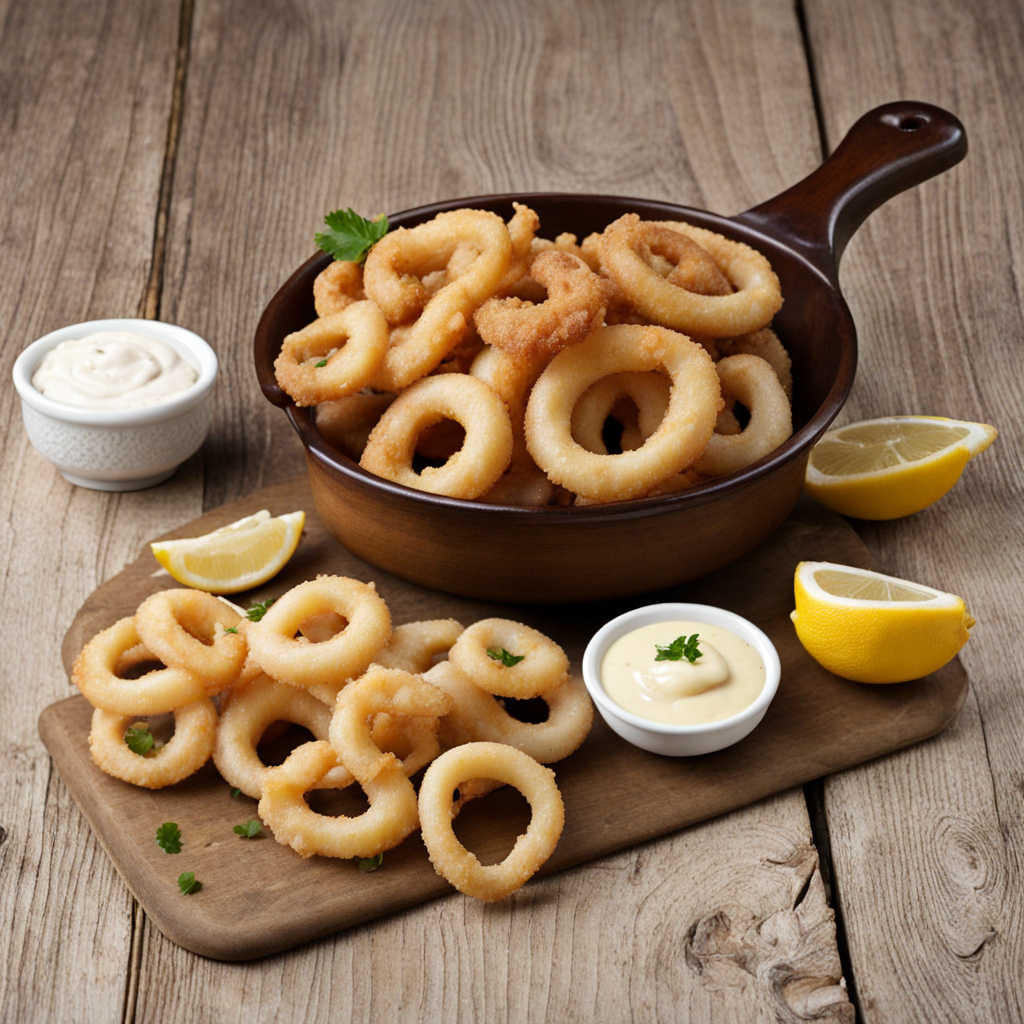Croquetas
Croquetas are a beloved Spanish delicacy, typically featuring a creamy filling encased in a golden, crispy exterior. The filling often consists of a rich béchamel sauce, which can be combined with a variety of ingredients such as ham, chicken, fish, or vegetables. This delightful combination creates a harmonious balance of textures—soft and velvety on the inside, while the outside offers a satisfying crunch with every bite. The versatility of croquetas means there's a flavor to suit everyone's palate, making them a popular choice for tapas or as a comforting appetizer. The preparation of croquetas involves crafting a thick béchamel sauce infused with the chosen ingredients, which is then cooled, shaped into small cylinders or balls, and coated in breadcrumbs. They are typically deep-fried until they achieve a perfectly golden-brown hue. This frying technique not only enhances the flavor but also locks in the warmth and richness of the filling. Each croqueta is a bite-sized explosion of flavor, often accompanied by a dipping sauce or a sprinkle of fresh herbs to elevate the experience. In Spain, croquetas hold a special place in the hearts of locals and are found in numerous restaurants and bars, often served as part of a larger tapas spread. They are enjoyed as a comfort food, evoking memories of family gatherings and festive occasions. The experience of biting into a croqueta is a delightful journey—starting with the satisfying crunch of the outer layer, followed by the warm, savory filling that bursts with flavor, ultimately leaving you craving more. Whether paired with a glass of wine or enjoyed on their own, croquetas are a must-try for anyone looking to explore the rich culinary traditions of Spain.
How It Became This Dish
The Rich History of Croquetas: A Spanish Culinary Delight Croquetas, or croquettes, are small, crispy pastries that have become a beloved staple in Spanish cuisine. With their creamy interior and golden-brown exterior, they are a perfect representation of the richness of Spanish food culture. The history of croquetas is a fascinating journey through culinary evolution, regional variations, and cultural significance that reflects Spain's diverse heritage. #### Origins: A Culinary Journey The origins of croquetas can be traced back to the 18th century in France, where a similar dish known as “croquette” emerged. The term “croquette” is derived from the French word “croquer,” which means “to crunch.” The French version typically consisted of a mixture of meat or fish bound together with a béchamel sauce, formed into small shapes, and then fried until golden. As culinary techniques and dishes traveled across Europe, croquettes made their way into Spanish kitchens. The Spanish adopted and adapted the concept, infusing it with local flavors and ingredients. The earliest records of croquetas in Spain date back to the early 19th century, particularly in the regions of Castile and León. They began as a way to utilize leftover meats and other ingredients, showcasing the resourceful spirit of Spanish home cooks. #### Cultural Significance Croquetas quickly became ingrained in Spanish culture, transcending their humble beginnings. They evolved from a simple way to avoid waste into a dish celebrated for its versatility and flavor. In Spain, croquetas are often enjoyed as tapas, small plates meant for sharing, which highlights the social aspect of dining in the country. They symbolize hospitality, inviting friends and family to gather around the table and indulge in a variety of flavors. Each region of Spain has put its own spin on croquetas, leading to numerous local variations. For instance, in Andalusia, you may find croquetas filled with jamón ibérico (cured ham), while in the Basque Country, seafood croquetas, such as those made with bacalao (salt cod), are particularly popular. This regional diversity reflects the myriad of ingredients and culinary traditions found throughout Spain. #### Ingredients and Preparation The traditional base of a croqueta is a creamy béchamel sauce made from butter, flour, and milk. This sauce serves as the foundation, which can be enriched with various fillings, including meats, vegetables, or cheese. The essence of croquetas lies in their creamy interior, which contrasts beautifully with their crispy outer layer. To prepare croquetas, the filling is mixed into the béchamel, allowed to cool, and then formed into small cylindrical or oval shapes. The croquetas are then coated in breadcrumbs and fried until they achieve a golden-brown color. This frying process is crucial, as it not only adds texture but also enhances the flavors through the Maillard reaction, which creates a savory aroma and taste. #### Evolution and Modernization As Spain underwent social and economic changes in the 20th century, so too did the croqueta. The dish became a symbol of home cooking, evoking nostalgia for many Spaniards. In the post-Civil War era, when resources were scarce, croquetas served as a practical means to stretch ingredients and feed families. With the globalization of cuisine and the rise of culinary tourism in the late 20th century, croquetas began to garner international attention. Spanish chefs started to experiment with innovative fillings, incorporating global flavors and modern techniques. Today, you can find croquetas made with truffle oil, spicy chorizo, or even vegetarian options filled with spinach and cheese. In contemporary Spain, croquetas have transcended their status as mere tapas. They are now featured prominently on restaurant menus, from casual bars to upscale dining establishments. The dish has also found its way into food festivals and culinary competitions, where chefs showcase their creativity and skill. #### The Role of Croquetas in Spanish Identity Croquetas are more than just a delicious snack; they are a reflection of Spanish identity and tradition. They embody the values of resourcefulness, creativity, and community that are central to Spanish culture. In a country where meals are often shared, croquetas serve as a perfect vehicle for connection, allowing people to gather and enjoy a moment of culinary joy together. Moreover, croquetas are often associated with family gatherings and celebrations. They are a common feature at festive occasions, from birthdays to weddings, where they are served alongside a variety of other traditional dishes. The act of making croquetas can also be a familial affair, with generations passing down recipes and techniques, further solidifying their place in Spanish culinary heritage. #### Conclusion: A Timeless Culinary Tradition In conclusion, croquetas represent a rich tapestry of culinary history, cultural significance, and regional diversity in Spain. From their origins in French cuisine to their evolution into a beloved Spanish staple, croquetas have captured the hearts and taste buds of many. They embody the spirit of resourcefulness and creativity that defines Spanish cooking, making them a timeless dish that continues to evolve while remaining deeply rooted in tradition. As you savor a croqueta, whether enjoyed in a bustling tapas bar in Madrid or made at home with family, you are partaking in a culinary journey that spans centuries and reflects the vibrant culture of Spain. This small yet flavorful dish not only delights the palate but also tells a story—a story of a nation, its people, and their enduring love affair with food.
You may like
Discover local flavors from Spain


